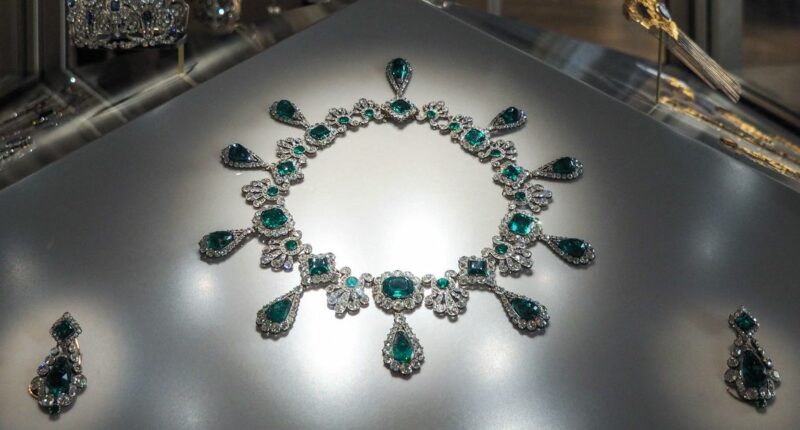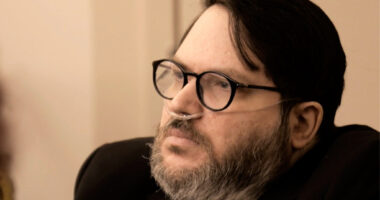Share this @internewscast.com
The audacious theft of crown jewels from the Louvre over the weekend has captured global attention. The jewels, estimated to be worth a staggering 88 million euros (approximately $157 million), were stolen in a heist that has left investigators scrambling. However, the monetary value does not reflect their immense historical significance to France, according to the Paris prosecutor heading the investigation.
Prosecutor Laure Beccuau revealed today that around 100 investigators have been mobilized in a determined effort to catch the culprits and recover the stolen gems. Speaking to broadcaster RTL, Beccuau emphasized the potential repercussions for the thieves should they attempt to dismantle the jewels, saying, “The wrongdoers who took these gems won’t earn 88 million euros if they had the very bad idea of disassembling these jewels.”
She expressed hope that the thieves would reconsider any plans to destroy the jewels, urging, “We can perhaps hope that they’ll think about this and won’t destroy these jewels without rhyme or reason.”

The French government has acknowledged that these invaluable artifacts were not protected by private insurance. Typically, museum collections in France, considered state property, are only insured during transportation between facilities. The outcome of this investigation could have significant implications for the security and insurance policies of national treasures.
The French government has confirmed the precious objects were not covered by private insurance.
Typically, museum collections in France are considered state property and are only insured when being transported to another facility.
France’s culture minister said that the security apparatus installed at the Louvre worked properly during the theft.
Questions have arisen about the Louvre security â and whether security cameras might have failed â after thieves rode a basket lift up the Louvreâs facade, forced a window, smashed display cases and fled with priceless Napoleonic jewels on Sunday morning.
âThe Louvre museumâs security apparatus did not fail, that is a fact,” the minister, Rachida Dati, told lawmakers in the National Assembly.
“The Louvre museumâs security apparatus worked.â

Dati said she launched an administrative inquiry that comes in addition to a police investigation to ensure full transparency into what happened.
She did not offer any details about how the thieves managed to carry out their heist given that the cameras were working.
But she described it as a painful blow for the nation.
The robbery was âa wound for all of us,” she said.
“Why? Because the Louvre is far more than the worldâs largest museum. Itâs a showcase for our French culture and our shared patrimony.â
Interior Minister Laurent Nuñez said on Monday that the museum’s alarm was triggered when the window of the Apollo Gallery was forced.
Police officers arrived on site two or three minutes after they were called by an individual that witnessed the scene, he said on LCI television.
Officials said the heist lasted less than eight minutes in total, including less than four minutes inside the Louvre.

Nuñez did not disclose details about video surveillance cameras that may have filmed the thieves around and in the museum pending a police investigation.
âThere are cameras all around the Louvre,â he said.
Sundayâs theft focused on the gilded Apollo Gallery, where the Crown Diamonds are displayed.
Alarms brought Louvre agents to the room, forcing the intruders to bolt, but the robbery was already over.
Eight objects were taken, according to officials: a sapphire diadem, necklace and single earring from a matching set linked to 19th-century French queens Marie-Amélie and Hortense; an emerald necklace and earrings from the matching set of Empress Marie-Louise, Napoleon Bonaparteâs second wife; a reliquary brooch; and Empress Eugénieâs diadem and her large corsage-bow brooch, a prized 19th-century imperial ensemble.

















